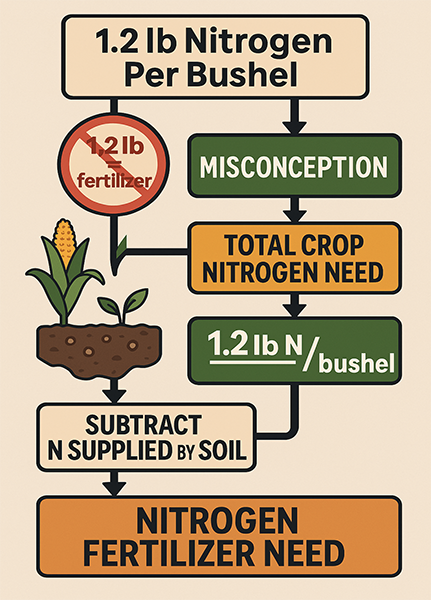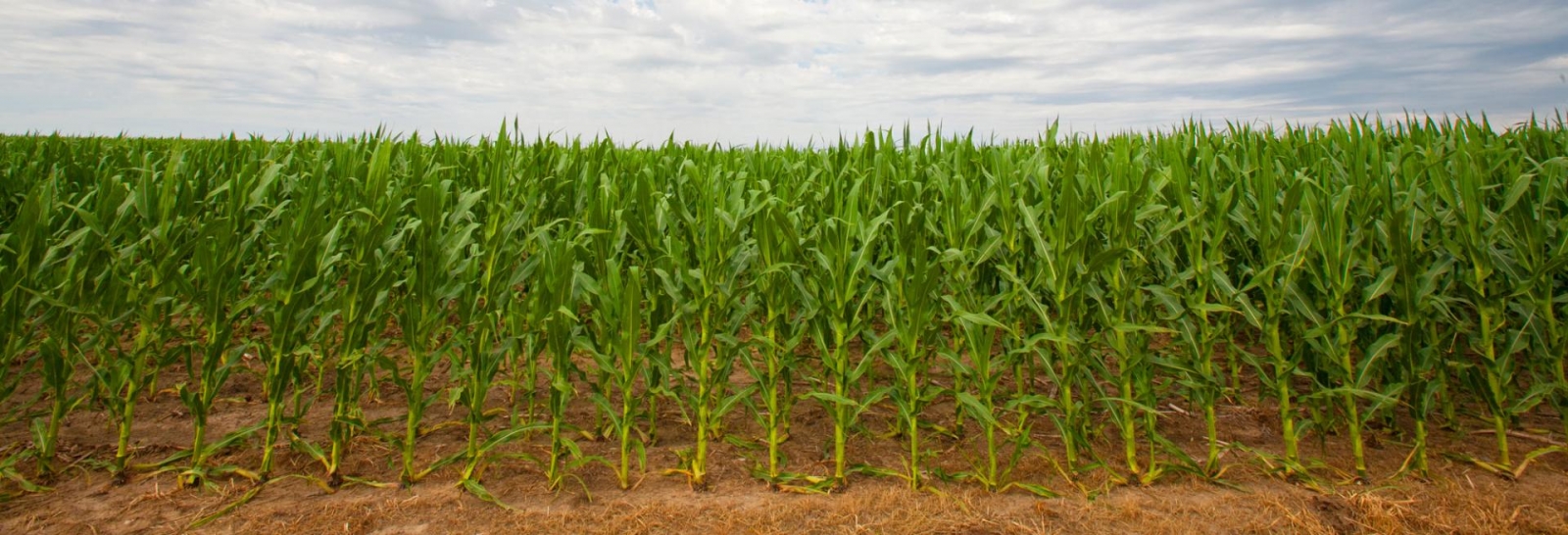This article is the second in a six-part companion series to the Nebraska Extension NebGuide G2365, “In-Season Nitrogen Management for Irrigated Corn.” Each article will explore critical concepts from the guide that growers have expressed a need for greater guidance on, offering additional insights and practical recommendations to help optimize nitrogen use and profitability.
We still often hear that the University of Nebraska-Lincoln (UNL) recommends 1.2 lb nitrogen (N) fertilizer per bushel of corn. Usually this is accompanied with concerns that UNL N fertilizer recommendations are outdated or excessive, though we also occasionally hear that UNL N rate recommendations are too low and not in line with yield potential of current corn hybrids. In reality, UNL has never recommended 1.2 lb N fertilizer per bushel of corn yield, and never will. So, how did this misconception arise?
In 1973, a prominent USDA soil scientist, George Stanford, published what would become a foundational research paper in the Journal of Environmental Quality titled “Rationale for Optimum Nitrogen Fertilization in Corn Production”. In this paper, he found that the N uptake required per bushel of yield, at around maximum yield, was relatively constant at 1.2 lb N/bu. This is total N uptake per bushel — not fertilizer N requirement.
At the same time, he described crop N use for optimal yield with a simple equation:
Nf = Ny - Ns
In this equation: Nf = nitrogen fertilizer need; Ny = crop nitrogen requirement; and Ns = nitrogen supplied by the soil. Nitrogen fertilizer need is determined after subtracting N supplied from soil from total crop N need. Thus, barring some extreme circumstance where no N comes from the soil, fertilizer N need will always be less than total crop N need, and always less than 1.2 lb N/bu for corn.
During the 50 years since Stanford’s paper was published, many N fertilizer prediction equations for corn — including UNL’s — start with the physiological N requirement for corn of 1.2 lb N/bushel. However, this should never be the fertilizer N recommendation, because soil will always supply some N.
Nitrogen supplied from the soil can arise from several sources: mineralization from soil organic matter, residual inorganic N, legume N credits, N contained in irrigation water, N in manure, etc. These various credits will be discussed in a future CropWatch article.

Occasionally, we receive comments that UNL’s N rate prediction algorithm accuracy could be improved by using a factor other than 1.2 in the equation: 1.0, 0.9, or some other factor. However, these suggestions ignore the physiological basis of the number, looking instead for an arbitrary factor that might improve the N rate prediction accuracy. Until new research finds that the physiological need for N of corn is different from 1.2 lb/bu, total crop N requirement should be based on this value, and the accuracy of N rate prediction equations improved through better understanding of N credits and losses during and before the growing season.
Research at UNL over the past 30 years has shown that N rate prediction equations for corn have a margin of error dictated by weather, and sensor-informed in-season N management approaches which react to weather during the growing season are more likely to produce accurate N rate and timing recommendations compared to prediction equations.

